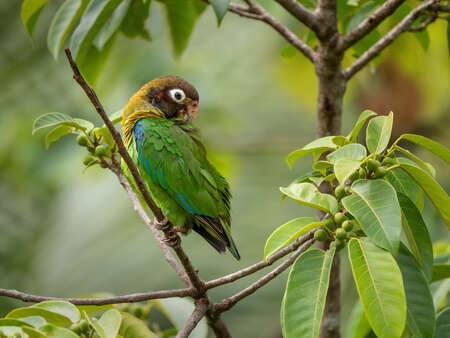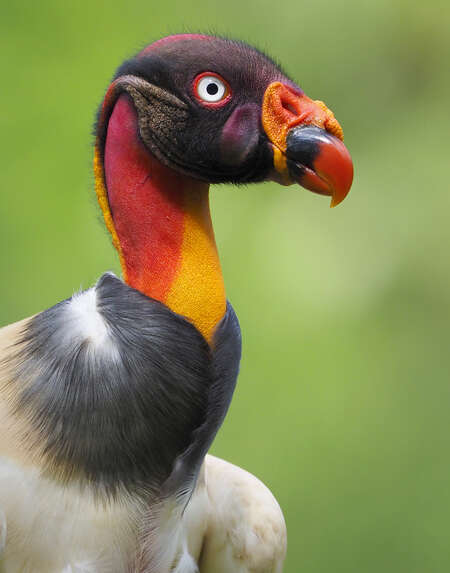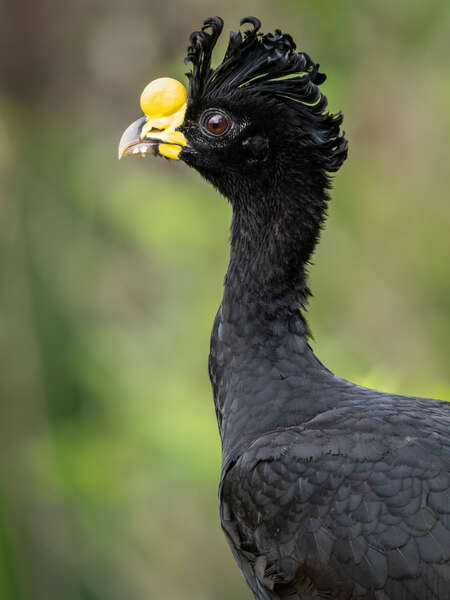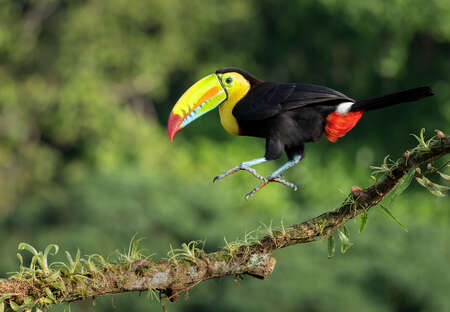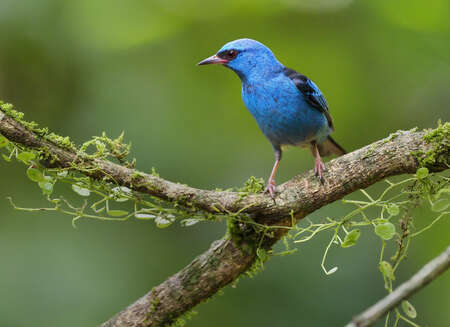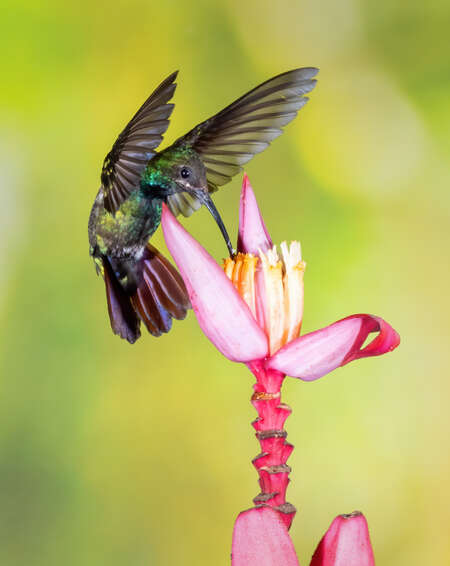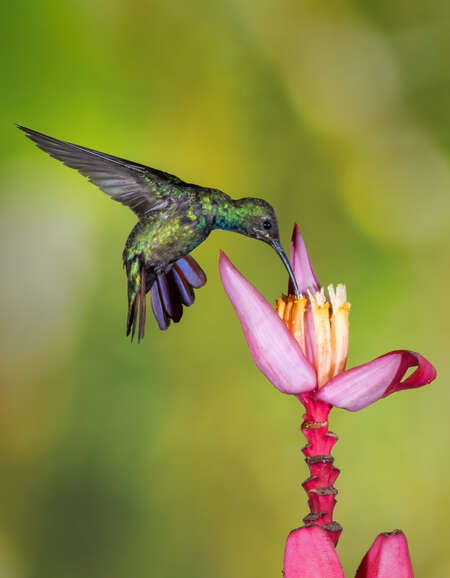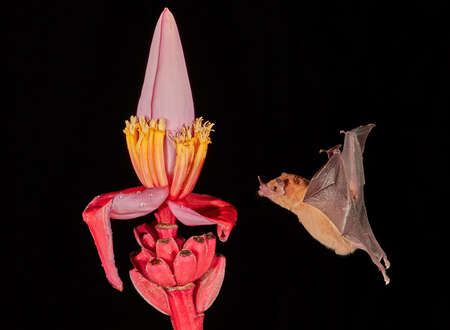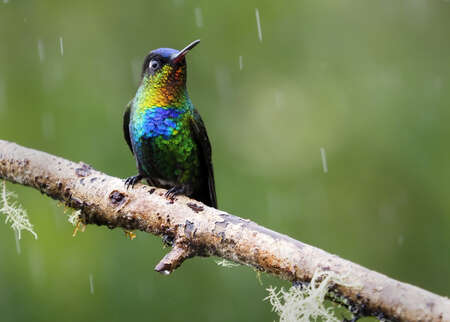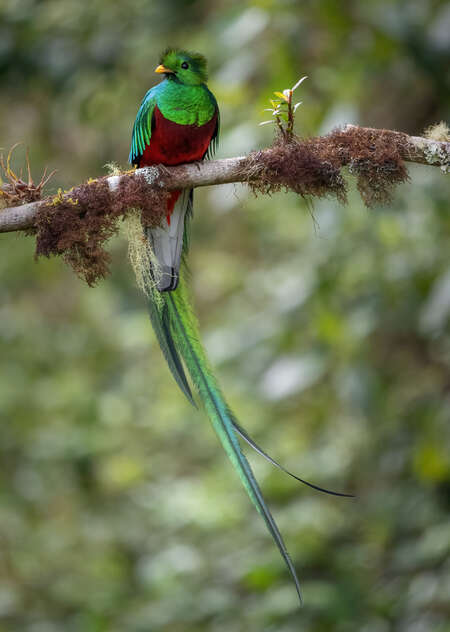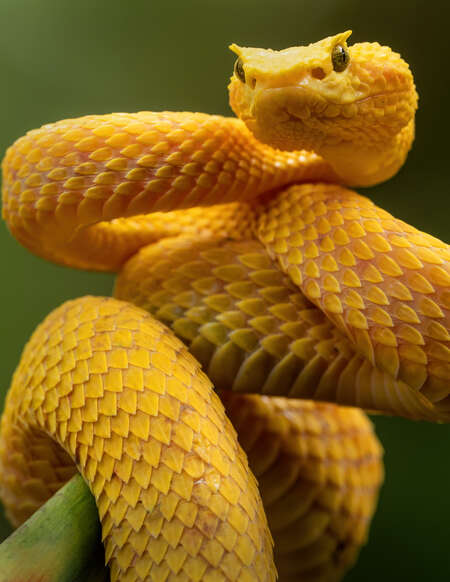It’s been a long ten years since I have had a chance to photograph in Costa Rica. A lot has changed in that time but it seems Costa Rica hasn’t – and I mean that in a very good way. My memories have dulled a little of this diverse, tropical country about the size of West Virginia, it remains just as beautiful and diverse as I remember it. When I mention diversity, think tropical latitudes with terrain from coastal beaches and lowlands on two different oceans to cloud forests reaching up to 15,000 feet in elevation with some of the most tropical diversity of plants, birds and mammals in Central America.
It’s the birds I am here for, so you can imagine my enthusiasm when my boss from Joseph Van Os Photo Safaris offered me a chance to catch up with our "Birds of Costa Rica Photo Tour" and photograph the trip for our marketing and social media needs. Add to that, I have been working on running the M.Zuiko 150-400mm F4.5 TC1.25X IS PRO lens through the paces back home in Montana and finding this is one amazing nature photography lens. Now I got to challenge it with birds of a tropical nature in tropical conditions.
Birds of Color
If it’s birds you like, Costa Rica has birds of all sizes and colors that literally drop out of the trees. The best way to find these birds and maximize your photography is a stay at specifically located lodges set up to cater to nature photographers. Many of these lodges have bird feeders and hides set right on the property.
The warm tropical lowland lodges will attract parrots, toucans and colorful scarlet macaws, along with a myriad of other species, right into good shooting distance. I should note that this is the kind of photography that a zoom lens works well for, as birds are close but the ability to zoom back to accommodate lager birds in the frame is a real plus. So whether it’s a collared aracari or a king vultures you are pursuing, I find a telephoto zoom to be my go to lens. The 150-400mm PRO zoom was always on my camera and ready to go – it was such the perfect lens for this kind of shooting.
Hummingbirds
If it seems like there are humming birds everywhere around in Costa Rica, then you are making a pretty good observation. As we moved up in elevation into the cooler misty cloud forest, the myriad of humming bird species became our target. You can casually set up and wait around any natural flower and catch great humming bird photos at nearly all lodge locations and we did. We also set up two multi-flash systems to capture hummingbirds coming into a well place blossom right on the balcony of our ecolodge.
Night Shooting
The photography did not stop at sundown. At night we moved our multi-flash set into the forest and added an infrared trigger to photograph nectar feeding bats as they came into a banana flower to feed. Since you are never really sure what direction your bats will be approaching from, I found the M.Zuiko 40-150mm F2.8 PRO to be the perfect lens for this kind of night shooting, allowing me just enough zoom reach to compose with area around the flower to capture the action. Once you have your camera set up and the flash exposure plugged in all you do is setback and let the trigger and camera do its work.
Rain
It rains a lot in Costa Rica. That’s one of the things that drives the diversity here, and I love the rain. The birds here continue to forage and fly no matter how hard it rains and, if you know me, I don’t let the rain stop me from photographing, even here in higher elevations of the cloud forest. I never worry about moisture when shooting either my E-M1X or my E-M1 Mark III whenever I have a PRO lens attached. I usually found myself to be the only photographer still making images when all else headed for cover during any heavy down pour. I have to say it is nice to have these times with these flying jewels all to myself and continue shoot in total confidence.
Quetzal
Next, we were off on a quest for the quetzal. Resplendent quetzals are one of the most revered birds of the tropical Americas and our trip was planned around the nesting season for these stunning birds. Colorful with a dynamic iridescence that is unequaled in the bird work these birds are beautiful by all standards. The males sport a long sweeping green tail that swings in the slightest forest breeze. Planning ahead and with an active nest already staked out, we arrived planning to spend the better part of two days on a nest stake out. Our selected nest cavity was well placed for a vantage point far enough away as not to disturb the birds but at a good angle to catch any bird activity. At about 25 meters, that means the long focal length lenses were needed.
The two growing chicks in the nest were approaching the moment of fledging so it was important we stay in place and quiet for any activity that developed at the nest. Fortunately, with the larger chicks requiring more frequent feeding as both the adult birds made frequent feeding visits to drop off fruits and insects to ravenous chicks. Each of these comings and goings gave us the chance to capture active feeding behavior and great portraits of resting adults. The activity at the nest culminated on our last day with the chicks fledging and the adults heading off into the forest to continue feeding the young birds well off into the wilds.
Tree Frogs and Reptiles
The forest here also offers up other colorful critters that call these tropics home. Between bird shoots we planned to photograph as many of the tree frogs and reptiles we could find. During the day frogs and snakes hangout under a dense forest canopy so shooting conditions are less than perfect. Maybe that’s why I have never really been too excited about my tree frog and reptile captures from here in the past. That disappointment is a thing of the past as this trip has turned that around. Most of the time these little forest denizens are in out of the way places and at odd angles making a tripod difficult to position. That’s when I found the world class image stabilization of up to 7.5 stops to not only allow me to capture a tack sharp image but fun and easy to capture.
I should also mention that having the chance to photograph venomous snakes like eyelash vipers and fer-del-lance snakes I was happy to keep my distance and employ the built in 1.25 teleconverter in the 150-400mm for that extra working distance for safety.
It is easy to see the 150-400mm PRO is one of the finest wildlife lenses ever made. The light weight is perfect for travel over and around just about any terrain nature throws at you. While the versatility of the focal length range and weather sealing along with exceptional image stabilization makes for a lens that will allow you to travel light and beam with confidence.
For all the travel that can be involved for nature photography, the lightweight designs of Micro Four Thirds cameras and especially the lenses have a significant appeal, and I can say the Olympus system is dependable to the extreme. I trust it wherever I will go.
I am already looking forward to my next photo trip back to Costa Rica!
Instagram: @ericsrock
As a visual storyteller, Eric has been sharing his passion for wildlife and cultural photography by leading nature and travel photographic adventures to many of the earths most remote regions. When not engaged in leading photography trips for Joseph Van Os Photo Safaris, rest assured Eric is out photographing, wherever he may be.

